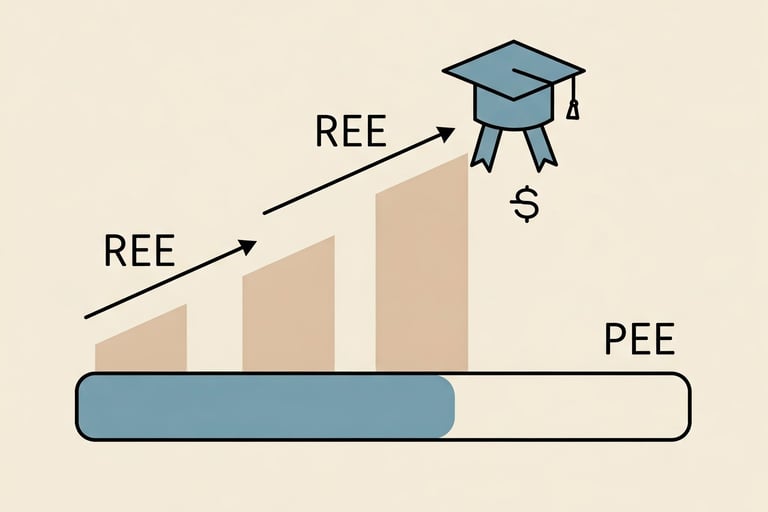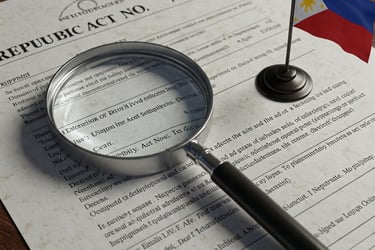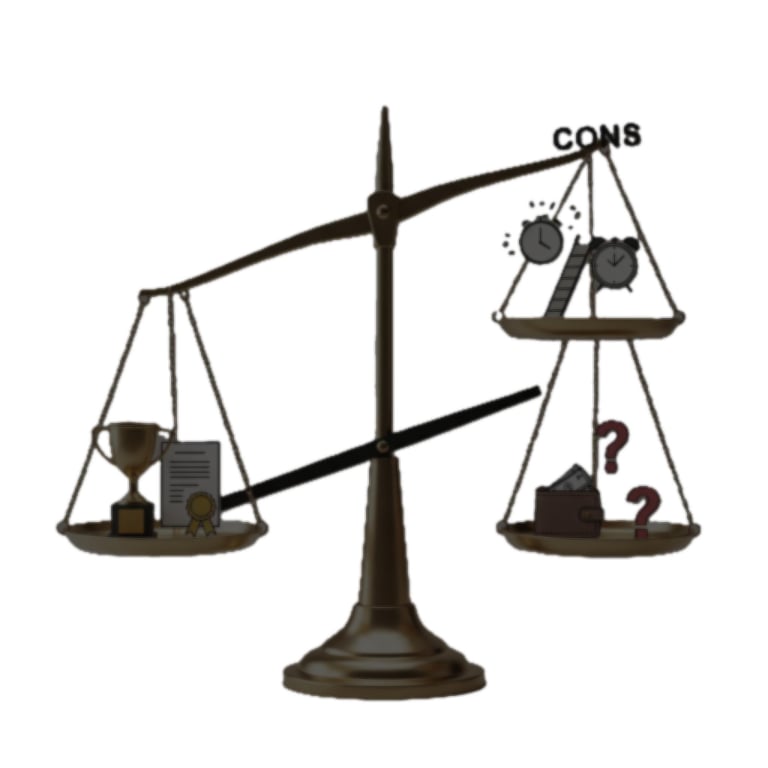PEE or Not PEE?: A Guide for Overseas Filipino Engineers
Should you upgrade from REE to PEE while working abroad? This blog explores the pros, cons, and international recognition of Philippine engineering credentials, helping you decide if pursuing PEE licensure is the right move for your career.
ENGINEERING
Upgrading from Registered Electrical Engineer to Professional Electrical Engineer: Is It Worth It for Overseas Filipino Engineers?
As an overseas Filipino engineer working in the Cayman Islands, you may be contemplating whether to upgrade your electrical license from Registered Electrical Engineer (REE) to Professional Electrical Engineer (PEE). This decision involves weighing various pros and cons, especially given your established position and good earnings abroad. In this blog post, we will explore the advantages and challenges of pursuing PEE licensure, the recognition of Philippine engineering credentials in North America, and the ongoing efforts by the Professional Regulation Commission (PRC) to facilitate international recognition for Filipino engineers.
Understanding PEE Licensure in the Philippines
Eligibility Requirements Under RA 7920
To qualify for PEE registration in the Philippines, applicants must meet specific criteria outlined in Republic Act No. 7920 (RA 7920). These include:
Citizenship and Moral Standing: Must be a Filipino citizen of good moral character.
Educational and Professional Credentials: A Bachelor of Science in Electrical Engineering (BSEE) degree and valid REE licensure are mandatory.
Experience Requirement: At least four years of active electrical engineering practice post-REE registration.
For engineers working abroad, such as in the Cayman Islands, overseas experience can count toward this requirement, allowing you to fulfill licensure prerequisites without returning to the Philippines.
Examination and Documentation Process
The PEE application process involves an oral examination to verify your technical report and service record. Required documents include proof of citizenship, NBI clearance, and certificates of employment. For those overseas, logistical challenges may arise in submitting physical documents or attending interviews, necessitating coordination with the PRC via consular services.
Pros and Cons of Pursuing PEE Licensure
Advantages of PEE Status
Enhanced Professional Authority: PEE licensure allows you to approve and seal electrical plans, which is essential for certain projects in the Philippines.
Career Mobility in the Philippines: PEE status opens doors to senior positions within government agencies, academia, and private firms.
Professional Prestige: The designation signifies advanced expertise, enhancing your reputation among peers and clients.
Challenges and Limitations
Limited Immediate Utility Abroad: While respected domestically, PEE status does not automatically grant practice rights in the Cayman Islands or North America.
Logistical and Financial Costs: The examination and document submission process may require travel or coordination with embassies, incurring time and expenses.
Opportunity Cost: If you do not plan to return to the Philippines or engage in projects requiring Philippine certification, the benefits may diminish.
Recognition of Philippine Engineering Credentials
Licensure Pathways in the United States
In the U.S., foreign-trained engineers must undergo credential evaluations and pass state-specific examinations to obtain a Professional Engineer (P.E.) license. The National Council of Examiners for Engineering and Surveying (NCEES) outlines two primary routes:
Credentials Evaluation: Engineers with non-ABET-accredited degrees must submit academic records for review.
Mutual Recognition Agreements (MRAs): A recent MRA between the U.S. and U.K. allows certain engineers to apply for P.E. licenses in select states.
Currently, there are no MRAs between the Philippines and U.S. states; thus, PEE licensure alone does not guarantee reciprocity.
Cayman Islands Licensure Landscape
The engineering sector in the Cayman Islands operates under British standards. Filipino engineers must register with the Cayman Islands Engineering Council (CIEC), which requires proof of competency through exams or equivalency assessments.
PRC Initiatives for International Recognition
PRC’s Role
The PRC has not established MRAs with North American or Caribbean jurisdictions as of 2025. However, its consular outreach missions aim to support overseas Filipino professionals with document authentication and licensure renewals.
World Bank’s Business Enabling Environment (BEE) Program
Launched in 2022, this initiative seeks to harmonize global business regulations, including professional licensure. While it emphasizes reducing barriers for skilled labor mobility, it does not directly address engineering agreements.
Strategic Recommendations
Assess Long-Term Career Goals: If you plan to return to the Philippines or engage in cross-border projects requiring Philippine certification, pursuing PEE licensure is advantageous.
Explore U.K. Credentialing: Given the U.S.-U.K. MRA, obtaining Chartered Engineer (CEng) status could provide indirect access to U.S. licensure.
Leverage PRC Consular Support: Utilize embassy services for document processing and stay informed about emerging MRAs through PRC announcements.
Conclusion
Upgrading to PEE status offers tangible benefits for engineers seeking advancement in the Philippine market but provides limited direct advantages abroad. The PRC’s current efforts focus on administrative support rather than licensure reciprocity; however, global initiatives signal potential improvements in long-term mobility for Filipino engineers.
Ultimately, your decision should hinge on your career trajectory—considering both immediate needs and future aspirations as you navigate this important professional milestone!
Citations:
https://www.worldbank.org/content/dam/doingBusiness/pdf/BEE%20Concept%20Note_December%202022.pdf
https://www.reddit.com/r/AskEngineers/comments/r1fwh8/electrical_license_or_pe/
https://www.fieldpulse.com/resources/blog/electrical-license-reciprocity-by-state
https://www.aphis.usda.gov/pet-travel/us-to-another-country-export/pet-travel-us-cayman-islands
https://www.ul.com/services/ul-and-c-ul-hazardous-areas-certification-north-america
https://forums.mikeholt.com/threads/pe-and-master-electrician.70792/
https://www.iflscience.com/mexico-may-sue-google-over-renaming-the-gulf-of-mexico-78051
https://www.thalesgroup.com/en/markets/digital-identity-and-security/government/inspired/biometrics
https://www.facebook.com/iieeqatar/videos/launching-of-global-iiee-pee-mentoring/416542190041702/
https://nlp.biu.ac.il/~ravfogs/resources/embeddings-alignment/glove_vocab.250k.txt
https://www.pec.org.pk/accredition/accredited-engg-programmes-outside-pakistansecond-schedule-2/
https://www.philippine-embassy.org.sg/prc-result-for-ree-and-rme/
https://www.ul.com/resources/requirements-importing-electrical-systems-north-america
https://www.canada.ca/en/employment-social-development/programs/foreign-credential-recognition.html
https://ustr.gov/sites/default/files/2024%20NTE%20Report.pdf
https://www.foi.gov.ph/requests/electrical-engineer-foreign-reciprocity-ra-7920/
https://iiee.org.ph/module?id=9&name=BOARD+OF+ELECTRICAL+ENGINEERING
https://www.sec.gov/Archives/edgar/data/1905511/000149315222006544/formf-1.htm
https://www.planning.ky/licences/electrical-contractor-licence
https://ph.linkedin.com/in/anton-francis-vigil-ree-miet-b35aba147
https://www.worldbank.org/content/dam/meetings/external/annualmeeting/Participant-List.pdf
https://boards.cruisecritic.com/topic/172850-is-a-marriage-in-the-cayman-islands-legal-in-the-usa/





